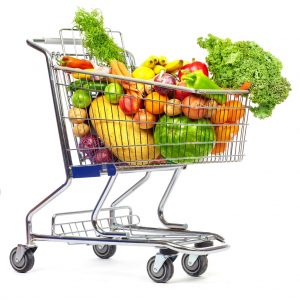1. Make a list.
Organize your list into categories relevant to your household to save time spent scanning the list and aisles. Sticking to the list will curb impulse purchases, helping you make healthier decisions, curb time spent browsing in aisle and remain on a budget.
2. Stick to in-season produce.
Fresh produce costs less in season, and it tastes better too. when buying it out of season means higher prices and lower quality.
3. Shop the perimeter.
Stick to the outermost aisles of the store for the freshest options, which include produce, the meat and seafood departments, and the refrigerated dairy aisle. Fresh foods tend to be healthier than most ready-to-eat items typically found in the center aisles of a supermarket.
4. Read nutritional labels.
Don’t fall victim to marketing claims stamped on the front of a package. Buzzwords such as “Healthy” or “All-Natural” may sound good, but to understand what you’re eating, scan nutritional labels, including the ingredients, to determine what you’re buying. Health-minded shoppers should take note of the saturated fat, sodium and sugar content for each serving.
5. Skip the samples.
“Yummm this is good”! Snacking while shopping sends a message to your brain that it’s time to eat, which may trigger the urge to impulse shop.
6. Reach for the back.
Supermarkets generally practice the stocking principle of arranging older items toward the front of the display. For the freshest options when it comes to foods like milk and ground meat, dig around at the back of the display case for items marked with later expiration or sell-by dates.
7. Be wary of deals.
Strategic wording by supermarkets may fool shoppers into believing they’ve scored a deal — signs boasting “Two for $8,” “Limit 8 per customer” or “Special” may imply a sale without offering a cut off the full retail price.
Leave a Reply
You must be logged in to post a comment.